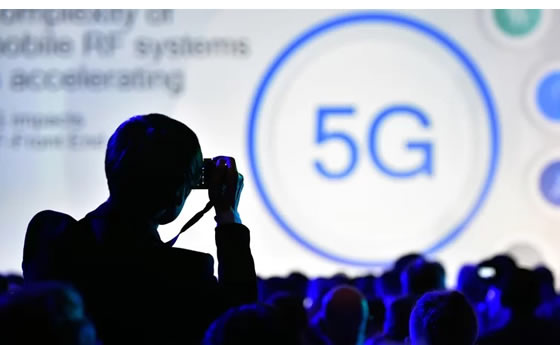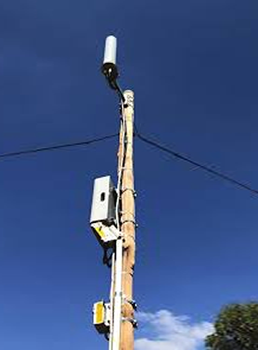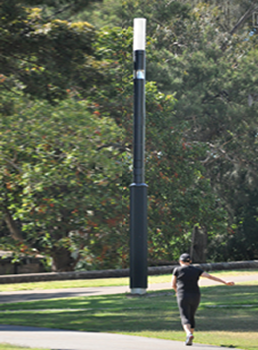06 Jun 5G & THE INTERNET OF THINGS (IoT)
Listen to my recent interview on “5G Technology: is it worth the risk?” FX medicine podcast HERE
5G is a new generation in mobile wireless communication that will give rise to the fourth industrial revolution (Industry 4.0) that promises greater reliability, massive connectivity, faster network speeds, better coverage, low latency, mass cloud computing and autonomous systems incorporating artificial intelligence. This will dramatically change the way we live, work and travel as everything we own and buy from our cars to appliances will contain antennas and microchips that will be connected wirelessly as part of the ‘Internet of Things’ (IoT).
The government established a 5G working group consisting of industry bodies and key industry players in
2017 to coordinate the implementation of 5G networks across the country in 2019/2020 in order to become a ‘first-adopter country’ in order to gain a competitive advantage internationally with the aim of providing data coverage to more than 99% of the population (Australia, 2017b). Remarkably, there are no health experts that have been appointed to the working group. By 2025, 5G is predicted to cover a third of the world’s population.
High frequency millimeter wave radiation was developed by the military as a weapon and in crowd control.
Concerns
I have several concerns associated with the rollout of the 5G network:
- Your privacy and security is at risk. The 5G network represents the greatest threat to freedom in the history of humanity. Every smart device from your phone, computer, smart meter and appliances within your home, will record data about you, your choices and your activities in real time via the 5G network. The ability to hack into this network is evidenced by the growing number of incidences detailing how intruders can hack into wireless baby monitors to talk to your kids whilst they are sleeping; intruders using digital devices to hack into and disable your home security system; and power distributors shutting down your heating and cooling systems remotely to save power to the grid. The 2019 Corbett Report and the intelligence community openly admit 5G provides the ideal platform to spy on citizens in the name of ‘national security’. Privacy and security will be virtually non-existent unless you live off the grid. Is the demand for smart appliances and the internet of things so great that we are willing to relinquish control over our most intimate data, threaten our security and privacy, and risk our families health? I don’t think so!
 Health concerns. 5G involves the mandatory irradiation of the public and life (plants and animals) on this planet without any research to verify its safety. There are currently no independently funded research being conducted by the telecommunications industry on the impact of 5G on human health (Blumenthal, 2018) despite the fact that radiofrequency fields used in current telecommunications and wireless technologies has demonstrated reproducible biological effects ranging from suppressing melatonin to increasing oxidative stress, DNA strand breaks and enhancing the permeability of the blood brain barrier (Bijlsma, 2018). Whilst there has been little research conducted on the health effects arising from millimeter wave radiation (much higher radiofrequencies), preliminary observations show that it increases skin temperature, alters gene expression, promotes oxidative stress, influences inflammatory processes and contributes to ocular damage (Di Ciaula, 2018). However, the impact of high frequency radiation on eye disease like cataracts has been thoroughly studied and well established (since the 1960s) in animals and humans, as the eyes lack sufficient blood flow to dissipate heat effectively (Carpenter & Ummersen, 1968; Foster, Ferri, & Hagan, 1986; Le Dréan et al., 2013; Moss, Murray, & Parr, 1977; Riva, Logean, & Falsini, 2005; Vignal, Crouzier, Dabouis, & Debouzy, 2009). It is an interesting coincidence that the prevalence of cataracts has increased significantly since 2005, which coincides with the launch of the 2nd and subsequent generations of wireless communications in various countries (Daien, Le Pape, Heve, Carriere, & Villain, 2015; Gollogly, Hodge, St. Sauver, & Erie, 2013; Institute, 2010). There are also concerns that the 2 to 5 million sweat ducts in the skin throughout the human body, act as a helical antenna to these frequencies and have been shown to absorb high levels of this radiation (Betzalel, Ben Ishai, & Feldman, 2018). This is a concern in light of the fact the skin is connected via the sympathetic nervous system to reflect states of stress, emotion, fear, pain and overall mental health. Furthermore, phased array cell antennas may result in ‘Brillion precursors’ which are very fast pulses of radiation that can travel deep within the body (Professor Kurt Oughstun). As it will take years or even decades to establish the impact of exposing a generation to this electrosmog from the ‘cradle to the grave’, the precautionary principle should be invoked as a matter of urgency.
Health concerns. 5G involves the mandatory irradiation of the public and life (plants and animals) on this planet without any research to verify its safety. There are currently no independently funded research being conducted by the telecommunications industry on the impact of 5G on human health (Blumenthal, 2018) despite the fact that radiofrequency fields used in current telecommunications and wireless technologies has demonstrated reproducible biological effects ranging from suppressing melatonin to increasing oxidative stress, DNA strand breaks and enhancing the permeability of the blood brain barrier (Bijlsma, 2018). Whilst there has been little research conducted on the health effects arising from millimeter wave radiation (much higher radiofrequencies), preliminary observations show that it increases skin temperature, alters gene expression, promotes oxidative stress, influences inflammatory processes and contributes to ocular damage (Di Ciaula, 2018). However, the impact of high frequency radiation on eye disease like cataracts has been thoroughly studied and well established (since the 1960s) in animals and humans, as the eyes lack sufficient blood flow to dissipate heat effectively (Carpenter & Ummersen, 1968; Foster, Ferri, & Hagan, 1986; Le Dréan et al., 2013; Moss, Murray, & Parr, 1977; Riva, Logean, & Falsini, 2005; Vignal, Crouzier, Dabouis, & Debouzy, 2009). It is an interesting coincidence that the prevalence of cataracts has increased significantly since 2005, which coincides with the launch of the 2nd and subsequent generations of wireless communications in various countries (Daien, Le Pape, Heve, Carriere, & Villain, 2015; Gollogly, Hodge, St. Sauver, & Erie, 2013; Institute, 2010). There are also concerns that the 2 to 5 million sweat ducts in the skin throughout the human body, act as a helical antenna to these frequencies and have been shown to absorb high levels of this radiation (Betzalel, Ben Ishai, & Feldman, 2018). This is a concern in light of the fact the skin is connected via the sympathetic nervous system to reflect states of stress, emotion, fear, pain and overall mental health. Furthermore, phased array cell antennas may result in ‘Brillion precursors’ which are very fast pulses of radiation that can travel deep within the body (Professor Kurt Oughstun). As it will take years or even decades to establish the impact of exposing a generation to this electrosmog from the ‘cradle to the grave’, the precautionary principle should be invoked as a matter of urgency.- Devastating impact on wildlife. The infrastructure will require the removal of hundreds of thousands of trees because they interfere with the signals. There are also concerns that the widespread deployment of milliwave radiation will impact on insect populations, due to resonant frequencies. This is a concern in light of the fact the insect population has already declined 70% from pesticide use, so its impact on our food chain is essentially unknown.
- If you blanket the entire planet with radiofrequencies, how can you research its impact on human health when there will be no control (ie no part of the blanket not influenced by it in some way?).
What progressive cities/countries are doing about 5G.
- 2017 International 5G appeal launched by 231 scientists and doctors from 41 countries calls on the European Union to halt the rollout of 5G due to serious health concerns.
- February, 2019. US Senator Richard Blumenthal raised concerns about the lack of research on 5G and health risks. Upon questioning, the telecommunications industry admit they have conducted no research or provided any funding to conduct independent research on the health effects associated with 5G.
- March, 2019. The Russian Ministry of Defence refuses to transfer frequenices for 5G to delay the rollout by several years.
- March, 2019. Portland, Oregon (US) city officials state their opposition to the installation of 5G infrastructure until the health risks were determined.
- March, 2019. Florence, Italy refuses 5G infrastructure based on the precautionary principle and ignores ICNIRP assurance it is safe, as it contradicts the body of research demonstrating health effects from existing radiofrequency radiation.
- April, 2019. Brussels, Belgium. Environment minister Celine Fremault halts 5G development on the basis that its citizens were not to be used as ‘guinea pigs’.
- April, 2019. Switzerland adopts a resolution calling for a moratorium on 5G requesting the World Health Organisation to monitor independent studies to establish harmful effects.
- April, 2019. The House of Representatives of the Netherlands expressed concerns over health effects from the 5G network.
Read more HERE.
My biggest concern is that there hasn’t been much research done on the biological effects on high frequency technologies such as 5G.” David Mercer, University of Wollongong
Infrastructure: 5G in Australia
The Department of Communications deployed the infrastructure in 2019 for the rollout of 5G network in 2020. This involves millions of low powered mobile base stations “small cell antennas” every 50 to 250m in high density populations to ensure adequate coverage. The close proximity of antennas is required because 5G uses high (microwave) frequencies which can only travel a small distance and is easily influenced by its surrounding (like trees which need to be cut down). Small cells transmit data via direct focused beams of energy (beam forming) to a specific area rather than dissipate the available power over a larger area (like the existing mobile phone base stations). This network will use phased arrays, ie the cell tower will have an array of thousands of antennas that will have an effective radiated power of up to 100,000 watts aimed at you and everyone else using a cell phone. In addition the 5th generation of cell phones will contain dozens of antennas all working together to shoot a beam to the nearest cell tower (Firstenberg, 2019). These multiple antenna segments are referred to as Multiple Input Multiple Output (MIMO) which allows information to be transmitted simultaneously (Australia, 2017a). Cells will be fitted to existing infrastructure such as street lights, power lines, tram poles, bus stops, railway stations, advertising panels and may also be installed inside residential and office buildings. In addition to the small cell antennas, the infrastructure also requires the deployment of twenty thousand satellites in the earth’s magnetosphere and ionosphere and there are concerns this may interfere with the terrestrial radiation (Schumann’s Resonance, earth magnetic field) which life has evolved upon.
Figures: small cells are currently being deployed in high density areas


To find the 5G towers in your location:
- Download the Aus Phone Towers App
- www.rfnsa.com.au. Type in your postcode, then click on the Environmental EME report.
- https://tottnews.com/2019/05/16/5g-tower-locations-australia/
5G trials have already commenced in Australia, with each of the main carriers working with mobile equipment suppliers in testing the application and limits of the technology. It will be initially used to carry data traffic in high-usage areas such as central business districts (CBDs), shopping malls, transport hubs, and sporting venues, where 4G networks are under strain. From there, it will spread to rural communities, until it has covered the entire nation.
Telstra is planning a 5G mobile service that will support both sub 6 GHz and mmWave spectrum, and ran its first 5G field trial on the Gold Coast in September 2016 and during the 2018 Commonwealth Games. Shortly after, Telstra launched the ‘5G Innovation Centre’ on the Gold Coast, including the world’s first precinct of 5G-enabled Wi-Fi hotspots, Australia’s first 5G Connected Car, and the world’s first end-to-end 5G non-standalone data call on a commercial mobile network. Since then, Telstra switched on 5G technology across selected areas of the Gold Coast, making it the first telecommunications provider in the country to be 5G ready. In addition, Telstra signed deals with smartphone manufacturers to bring new 5G phones “exclusively” to its 5G mobile network. As soon as compatible 5G commercial devices are made available by the mobile handset and device manufacturers, Telstra’s 5G network will be ready to receive them.
Optus have also successfully completed 5G network trials in Australia, switching on its 4.5G network in February 2017, followed by the addition of Massive MIMO and three-cell carrier aggregation to 4G. Following this, Optus successfully commenced a trial of the technology in Newcastle in 2017, which employed 4.5G technology, the organisations’ precursor to 5G speeds. Optus announced they will begin rolling out a 5G fixed network this year in selected metro areas, following successful trials with speeds 15 times faster than current technologies. Optus have launched a live 5G site in Sydney, and 47 more sites are planned to be online in 2019.
Vodafone commenced trials of 5G networking in 2016. During initial trials, conducted in partnership with the telco’s 5G technology partner Nokia, the company recorded clocking speeds of 5 Gbps over 200 MHz of spectrum in its first local live recordings of the technology.
How to test wireless technologies
Testing electromagnetic fields is challenging because you need to know the sources of radiofrequencies, how the built environment and surrounding objects may influence the fields, and use accurate meters that can pick up peak exposures in fractions of a second. The optimum way to test is to employ an ACES-certified Building Biologist to assess your home as they have undertaken 250 hours of nationally accredited training, and use expensive equipment (~$10,000). For a list of building biologists, go to www.asbb.org.au. If however this is not viable for you, an economical option is to purchase an accurate omnidirectional radiofrequency meter like the Safe and Sound Pro Radiofrequency digital meter ($695) or Safe and Sound Pocket Radiofrequency meter ($395). Effective frequency range is 200 MHz to 12 GHz). These meters will enable you to scan your home for radiofrequencies (used in initial rollout of 5G and wireless technologies) and compare the readings to the Building Biology limits.
Training: Electromagnetic Field Testing Technician, 250 hour course consists of 4 days on-campus, followed by 12 weeks of online training. Nationally accredited through Australian College of Environmental Studies (RTO.21740).
HOW TO TAKE ACTION AGAINST 5G
- Sign both petitions: Australian Parliament Submission to stop rollout of 5G AND Stop 5 G petition
- Stop 5G facebook groups https://www.facebook.com/groups/STOP5GGlobal/
- Radio interview of lawyer who stopped rollout of 5G in some Australian towns: How to take action against 5G – Max Igan in conversation with barrister Ray Broomhall.
VIDEOS TO WATCH
- What is 5G Animation. (2019). https://www.youtube.com/watch?v=8F4fX-IiJwI (1 min 40 secs)
- Professor Martin Pall leading EMF researcher: “The 5G rollout is absolutely insane” (9 mins) AND “5G the unreported global threat” (12 mins)
- 5G Exposed. (2019). https://livelearnevolve.com/5g-exposed-a-must-see-documentary-on-this-wireless-experiment-on-humanity/?fbclid=IwAR37BUDr__wJ6RL8IEsLgdmtlhXfSD7AKGzLKWzW0ePeC2A4h_JmwkQ-KME
- 5G, Birds, Bees and Humanity. (2019). Arthur Firstenberg. https://www.youtube.com/watch?v=MpdJ_t5XMvw
READ
- Professor Martin Pall. (2018). “5G: Great risk for EU, U.S. and International Health! Compelling Evidence for Eight Distinct Types of Great Harm Caused by Electromagnetic Fields”
- International appeal. Stop 5G on earth and in space. (Online). Available: https://www.5gspaceappeal.org/the-appeal
- Australian Mobile Telecommunications Association. Deloitte. (2019). Mobile Nation 2019. The 5G Future.
- Australian Government. (2017). 5G-enabling the future economy.
